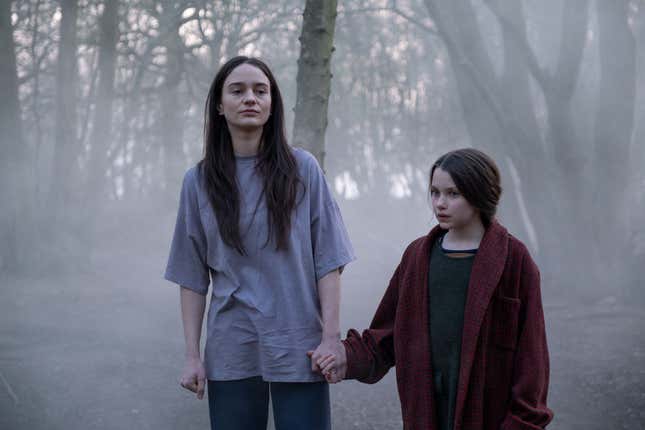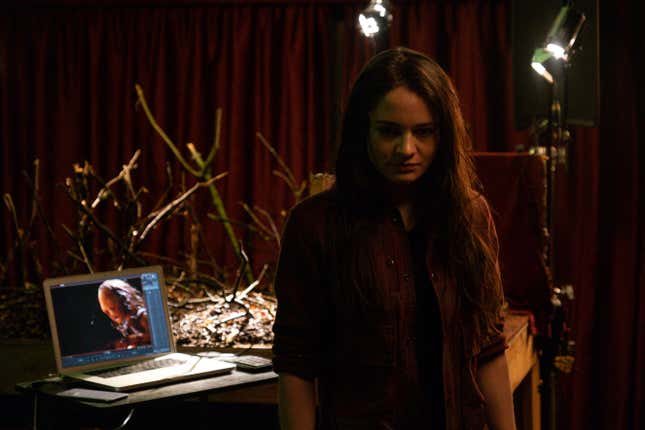Psychological horror films love digging into the minds of artists—a pursuit that becomes self-reflexive when the troubled character is a filmmaker. Stopmotion explores that trope from a visually dynamic point of view, following a young stop-motion animator on a dangerous downward spiral.
Directed and co-written by Robert Morgan, who also crafted the film’s eerily tactile stop-motion sequences, Stopmotion introduces us to Ella (The Last Voyage of the Demeter’s Aisling Franciosi). She’s long been in the shadow of her mother, Suzanne (Stella Gonet), an animation legend whose severe arthritis has made her unable to manipulate the puppets on her latest opus. Ella’s helping, but it’s unpleasant for all involved; Stella’s controlling tendencies are exacerbated by frustration over her physical limitations, and Ella’s completely unable to express herself emotionally or artistically. “She’s the brains, and I’m the hands,” Ella shrugs to her boyfriend (Tom York), and it’s very pointedly emphasized that Stella’s nickname for Ella—who’s just another tool to her in many ways—is “poppet.”
When, very early in Stopmotion, Stella suffers a stroke, Ella sets out trying to finish the film… until she meets a young neighbor (The Midnight Sky’s Caolilinn Springall) who bluntly informs her that Stella’s movie is “a bit boring,” and offers some suggestions on how to spice it up.

Her new little helper’s input feels impulsive at first, then becomes more pointed and demanding. She provides the story—a dark fairy tale about a girl hiding from an ominous man—and goads Ella into using specific materials (raw meat, animal bones) to make the puppets as realistically grisly as possible. Soon, Ella becomes consumed by the project, and Stopmotion’s film-within-a-film begins creeping into its main narrative.
There are hints that not all is right with Ella along the way; in a conversation with her mother that might be remembered or imagined, she admits she can’t create her own art without someone telling her what to do. Stopmotion’s descent into surreal madness is slowed any time Ella steps away from her puppets and camera set-up, but she finds no relief in her outside life. A brief detour into working at a mainstream animation house ends in disaster, and her boyfriend, who has his own artistic ambitions Ella doesn’t think much of, is rapidly running out of patience. The more Ella struggles to take control of her life, the more her perception of reality becomes distorted.
There are some story turns in Stopmotion that can feel a bit familiar. You’ll spot them coming early on, and perhaps that’s the intention. But the performances do a lot to elevate the story—Franciosi infuses intriguing layers into a character who steadily becomes less and less sympathetic—and the unsettling stop-motion sequences, which are skillfully blended into the live-action, manage to be both marvelous and viscerally horrifying.

Stopmotion opens in theaters today, February 23; it arrives on Shudder May 31.
Want more io9 news? Check out when to expect the latest Marvel, Star Wars, and Star Trek releases, what’s next for the DC Universe on film and TV, and everything you need to know about the future of Doctor Who.




















+ There are no comments
Add yours